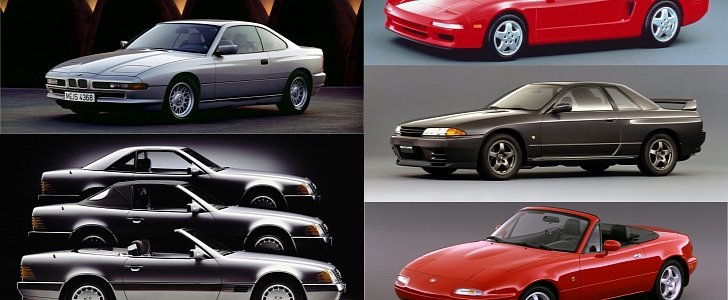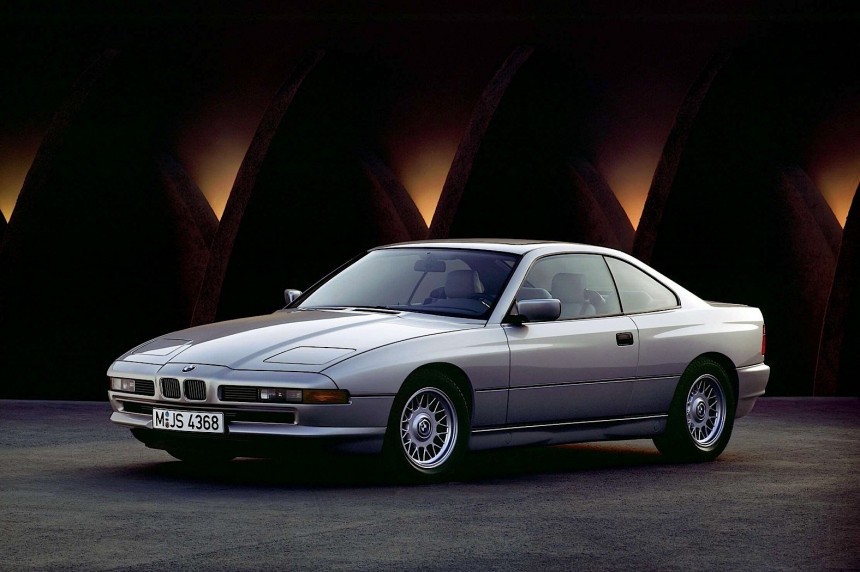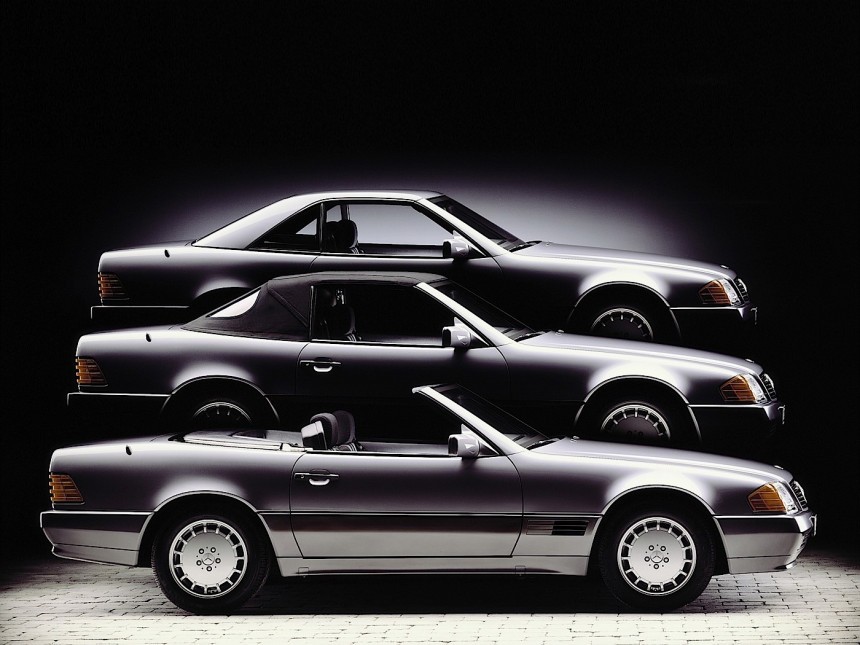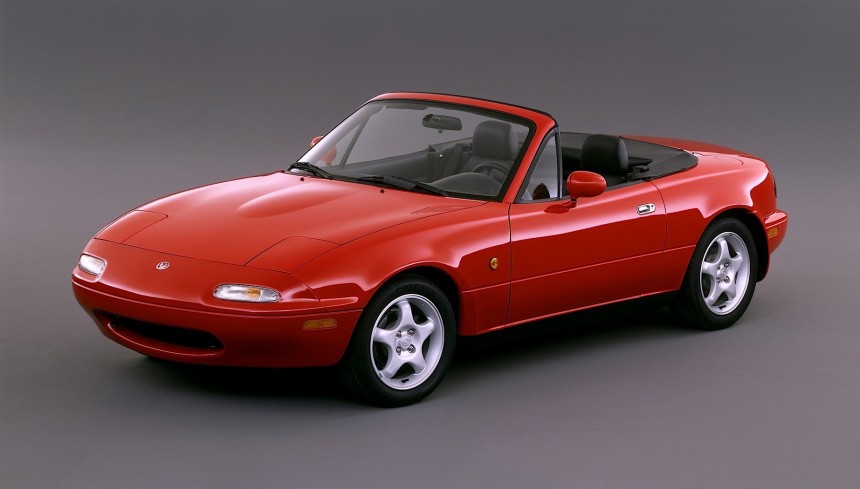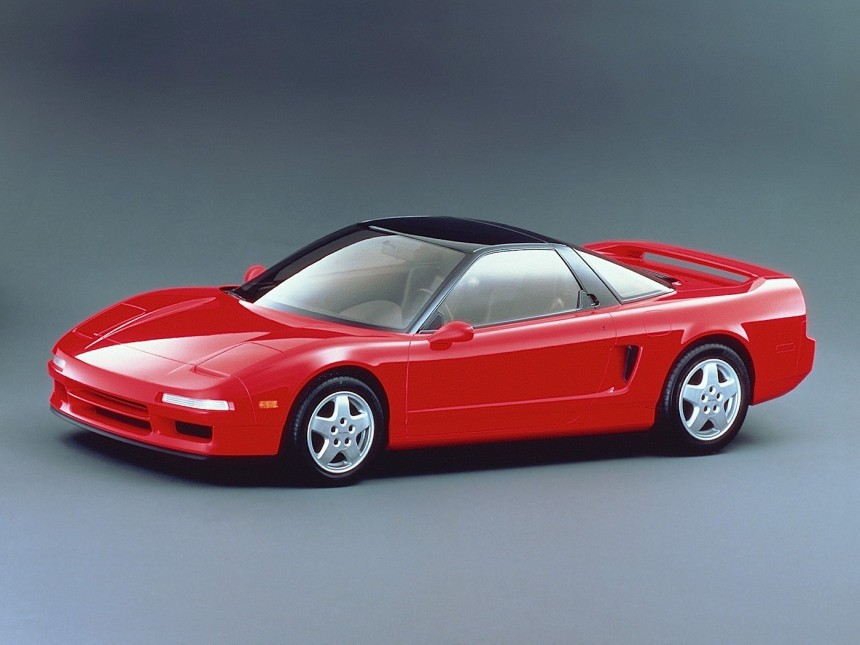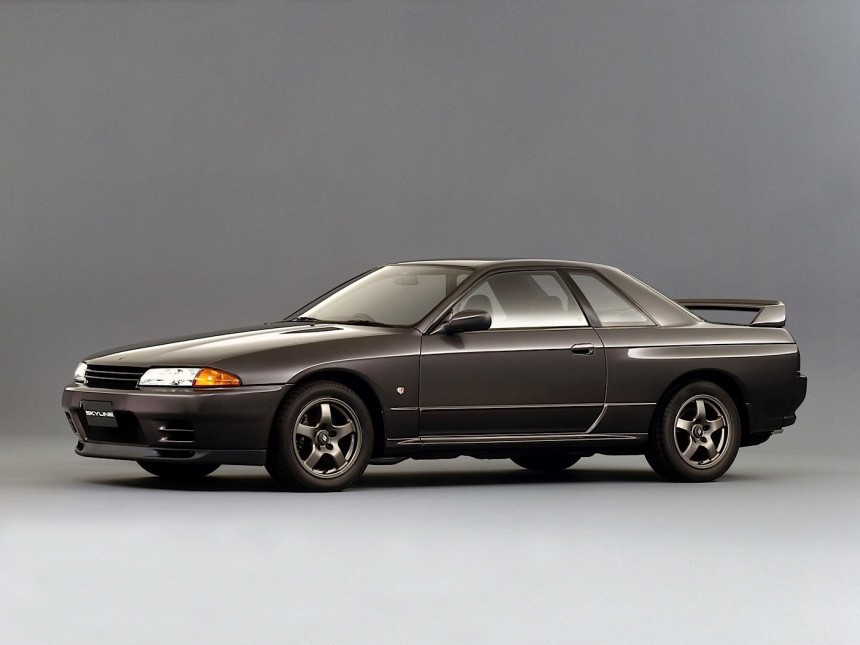There have been plenty of enthralling automotive stories since the modern car was invented some 135 years ago, but for some reason, it seems that most decades did not have them condensed in a single year.
Choosing just one year may seem a bit arbitrary at first, but the following tally of cars have more than proved themselves in the last 30 years. Not only that, but all of them have descendants worthily carrying their saga forward nowadays.
It was the last year of the 1980s decade that spawned some of the most compelling cars of that era, all of which have introduced new technologies, changed the status quo or simply performed in a manner that was unheard of until then.
A tumultuous year from most points of view, 1989 was a political turning point for Eastern Bloc countries in Europe, following a ripple of revolutions, while beginnings of the Internet as we all know and love or hate were being born in Australia and the United States.
The car scene was at least as exciting, especially when it came to the abandonment of the blocky design language that dominated most of the 1980s and the advent of new and exciting technologies.
BMW 8 Series E31
It was the 1989 Frankfurt Motor Show where BMW proudly launched one of its least successful but most iconic luxury coupes, the very first 8 Series. Thirty years later, an all-new 8 Series has finally returned to the BMW lineup, only this time more as a nameplate than as a true successor to the original model.
Following in the footsteps of its gorgeous predecessors, the 6 Series E24 and the legendary E9 line of coupes, the first generation of the 8 Series had one of the longest gestations of any BMW, over 8 years passing since the start of development until its official unveiling.
Not only that, but the Bavarians spend over 1.5 billion DM (almost a $billion in current money) for the development of the model, only to sell a little over 30,000 cars in less than a decade of production.
That said, the car is now one of the most recognizable luxury BMWs of old and has a giant cult following. The 850CSi was the first V12-engined car that was exclusively available with a 6-speed manual transmission, making it somewhat of a unicorn nowadays.
Mercedes-Benz SL (R129)
Following an 18 year gap, during which the third-generation SL Roadster was continuously produced without too many modifications, Mercedes-Benz finally unveiled the SL (R129). Just in time to steal the spotlight regarding sales against the 8 Series, the fourth-generation SL Roadster was unveiled at the 1989 Geneva Motor Show.
Unlike BMW, who developed the 8 Series from the ground up as a standalone model, Mercedes-Benz did its homework and utilized a reworked E-Class (W124) platform to conceive the fourth generation of its most well-known roadster. Later on, the Porsche-built 500 E (and later E 500), would have it favor returned by being fitted with the engine from the SL 500.
Still, if we include the powertrains and technology, the SL R129 was a perfect blend between the E-Class W124 and the S-Class W140, from which it even borrowed the massive 6.0-liter V12 for the SL 600.
The first Mercedes-Benz to be fitted with electronically controlled dampers (ADS), the fourth-generation SL-Class was also the first passenger vehicle to have seat-integrated seat belts and an automatically extending roll-over bar.
Mazda MX-5 Miata (NA)
In the same year that Lexus was launching as a luxury carmaker as a spin-off from Toyota, the rivals from Mazda were introducing what would eventually become the best-selling two-seat convertible car in history.
Internally designated NA, the first MX-5 Miata was unveiled at the 1989 Chicago Auto Show and took the world by storm with its nimbleness and so-called Jinba Ittai design philosophy. Meaning “oneness of horse and rider” in Japanese, Jinba Ittai was a concept borrowed from Yabusame, a style of mounted archery where the connection between horse and rider is of utmost importance.
Its main characteristics – a front-midship positioning of the engine, rear-wheel-drive and low weight – became idiosyncratic features of all the MX-5 Miatas that followed the original, including the current generation.
Designed in California, with its raison d'être being inspired by Bob Hall, a former Motor Trend journalist who then oversaw the project as part of Mazda USA, the Mazda MX-5 was called Miata in the U.S. Meaning “reward” in Old High German, the name was much better received in the States instead of the less personal MX-5.
Honda/Acura NSX
Also unveiled at the 1989 Chicago Auto Show, the first-generation Honda NSX has always been marketed under the Acura brand in the United States, where it was mostly sold despite having been conceived and built in Japan.
It's also the only car on this list that can brag with having none other than Ayrton Senna as an advisor during its final development stages, as the Brazilian was a McLaren Honda driver at the time. Initially only available as a coupe, the NSX was the first mass-produced car to have a body made entirely of aluminum, almost half a decade before the first-generation Audi A8, which is usually credited with the same feat.
When its development started in 1984, Honda's ethos with the NSX was to battle and even beat the V8 mid-engine Ferraris of the period. Some might say that the Ferrari Mondial was probably an easy-enough target, but Honda wanted to do with two cylinders less than the Italians.
Powered by a naturally aspirated, mid-mounted V6 and with a lightweight body, the first NSX created a lineage that was sadly interrupted at the end of its production, but Honda decided to revive the nameplate with an AWD hybrid supercar in 2016, 11 years later.
Nissan Skyline GT-R R32
Following a long line of RWD sports cars that actually originated from a car company that was assimilated by Nissan-Datsun, the first all-wheel-drive Skyline GT-R (R32) was also launched in the now infamous year of 1989.
Even though it was initially developed as an RWD model to compete in Group A racing, Nissan engineers decided to gift it with all-wheel-drive to increase its competitiveness. Called ATTESA ET-S, which is short for Advanced Total Traction Engineering System for All-terrain with Electronic Torque Split, the AWD system has since become synonymous with the GT-R and has transformed a rather neutral Japanese sports car into a downright supercar-beating legend.
Its flag is still held high by the current Nissan GT-R, which uses a modern version of ATTESA ET-S. Another legendary part of the Skyline GT-R R32 is, of course, its engine, with the RB26DETT becoming one of the most popular platforms for aftermarket modifications thanks to the power potential of its iron block and forged internals.
Even though it only started its Group A campaign in 1990, production for the R32 began in August 1989, one of the greatest years in automotive history.
It was the last year of the 1980s decade that spawned some of the most compelling cars of that era, all of which have introduced new technologies, changed the status quo or simply performed in a manner that was unheard of until then.
A tumultuous year from most points of view, 1989 was a political turning point for Eastern Bloc countries in Europe, following a ripple of revolutions, while beginnings of the Internet as we all know and love or hate were being born in Australia and the United States.
The car scene was at least as exciting, especially when it came to the abandonment of the blocky design language that dominated most of the 1980s and the advent of new and exciting technologies.
BMW 8 Series E31
Following in the footsteps of its gorgeous predecessors, the 6 Series E24 and the legendary E9 line of coupes, the first generation of the 8 Series had one of the longest gestations of any BMW, over 8 years passing since the start of development until its official unveiling.
Not only that, but the Bavarians spend over 1.5 billion DM (almost a $billion in current money) for the development of the model, only to sell a little over 30,000 cars in less than a decade of production.
That said, the car is now one of the most recognizable luxury BMWs of old and has a giant cult following. The 850CSi was the first V12-engined car that was exclusively available with a 6-speed manual transmission, making it somewhat of a unicorn nowadays.
Mercedes-Benz SL (R129)
Unlike BMW, who developed the 8 Series from the ground up as a standalone model, Mercedes-Benz did its homework and utilized a reworked E-Class (W124) platform to conceive the fourth generation of its most well-known roadster. Later on, the Porsche-built 500 E (and later E 500), would have it favor returned by being fitted with the engine from the SL 500.
Still, if we include the powertrains and technology, the SL R129 was a perfect blend between the E-Class W124 and the S-Class W140, from which it even borrowed the massive 6.0-liter V12 for the SL 600.
The first Mercedes-Benz to be fitted with electronically controlled dampers (ADS), the fourth-generation SL-Class was also the first passenger vehicle to have seat-integrated seat belts and an automatically extending roll-over bar.
Mazda MX-5 Miata (NA)
Internally designated NA, the first MX-5 Miata was unveiled at the 1989 Chicago Auto Show and took the world by storm with its nimbleness and so-called Jinba Ittai design philosophy. Meaning “oneness of horse and rider” in Japanese, Jinba Ittai was a concept borrowed from Yabusame, a style of mounted archery where the connection between horse and rider is of utmost importance.
Its main characteristics – a front-midship positioning of the engine, rear-wheel-drive and low weight – became idiosyncratic features of all the MX-5 Miatas that followed the original, including the current generation.
Designed in California, with its raison d'être being inspired by Bob Hall, a former Motor Trend journalist who then oversaw the project as part of Mazda USA, the Mazda MX-5 was called Miata in the U.S. Meaning “reward” in Old High German, the name was much better received in the States instead of the less personal MX-5.
Honda/Acura NSX
It's also the only car on this list that can brag with having none other than Ayrton Senna as an advisor during its final development stages, as the Brazilian was a McLaren Honda driver at the time. Initially only available as a coupe, the NSX was the first mass-produced car to have a body made entirely of aluminum, almost half a decade before the first-generation Audi A8, which is usually credited with the same feat.
When its development started in 1984, Honda's ethos with the NSX was to battle and even beat the V8 mid-engine Ferraris of the period. Some might say that the Ferrari Mondial was probably an easy-enough target, but Honda wanted to do with two cylinders less than the Italians.
Powered by a naturally aspirated, mid-mounted V6 and with a lightweight body, the first NSX created a lineage that was sadly interrupted at the end of its production, but Honda decided to revive the nameplate with an AWD hybrid supercar in 2016, 11 years later.
Nissan Skyline GT-R R32
Even though it was initially developed as an RWD model to compete in Group A racing, Nissan engineers decided to gift it with all-wheel-drive to increase its competitiveness. Called ATTESA ET-S, which is short for Advanced Total Traction Engineering System for All-terrain with Electronic Torque Split, the AWD system has since become synonymous with the GT-R and has transformed a rather neutral Japanese sports car into a downright supercar-beating legend.
Its flag is still held high by the current Nissan GT-R, which uses a modern version of ATTESA ET-S. Another legendary part of the Skyline GT-R R32 is, of course, its engine, with the RB26DETT becoming one of the most popular platforms for aftermarket modifications thanks to the power potential of its iron block and forged internals.
Even though it only started its Group A campaign in 1990, production for the R32 began in August 1989, one of the greatest years in automotive history.
